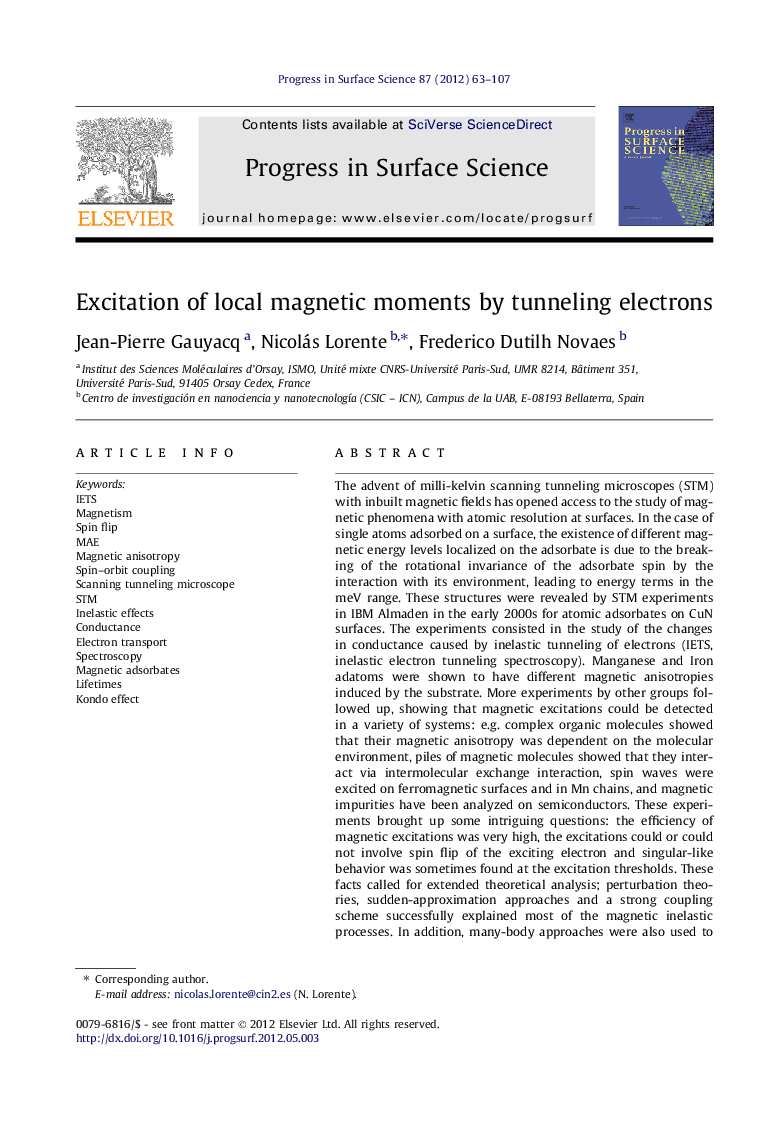| Article ID | Journal | Published Year | Pages | File Type |
|---|---|---|---|---|
| 5419961 | Progress in Surface Science | 2012 | 45 Pages |
Abstract
The advent of milli-kelvin scanning tunneling microscopes (STM) with inbuilt magnetic fields has opened access to the study of magnetic phenomena with atomic resolution at surfaces. In the case of single atoms adsorbed on a surface, the existence of different magnetic energy levels localized on the adsorbate is due to the breaking of the rotational invariance of the adsorbate spin by the interaction with its environment, leading to energy terms in the meV range. These structures were revealed by STM experiments in IBM Almaden in the early 2000s for atomic adsorbates on CuN surfaces. The experiments consisted in the study of the changes in conductance caused by inelastic tunneling of electrons (IETS, inelastic electron tunneling spectroscopy). Manganese and Iron adatoms were shown to have different magnetic anisotropies induced by the substrate. More experiments by other groups followed up, showing that magnetic excitations could be detected in a variety of systems: e.g. complex organic molecules showed that their magnetic anisotropy was dependent on the molecular environment, piles of magnetic molecules showed that they interact via intermolecular exchange interaction, spin waves were excited on ferromagnetic surfaces and in Mn chains, and magnetic impurities have been analyzed on semiconductors. These experiments brought up some intriguing questions: the efficiency of magnetic excitations was very high, the excitations could or could not involve spin flip of the exciting electron and singular-like behavior was sometimes found at the excitation thresholds. These facts called for extended theoretical analysis; perturbation theories, sudden-approximation approaches and a strong coupling scheme successfully explained most of the magnetic inelastic processes. In addition, many-body approaches were also used to decipher the interplay between inelastic processes and the Kondo effect. Spin torque transfer has been shown to be effective in changing spin orientations of an adsorbate in theoretical works, and soon after it was shown experimentally. More recently, the previously mentioned strong coupling approach was extended to treat the excitation of spin waves in atomic chains and the ubiquitous role of electron-hole pair creation in de-exciting spins on surfaces has been analyzed. This review article expounds these works, presenting the theoretical approach by the authors while trying to thoroughly review parallel theoretical and experimental works.
Keywords
Related Topics
Physical Sciences and Engineering
Chemistry
Physical and Theoretical Chemistry
Authors
Jean-Pierre Gauyacq, Nicolás Lorente, Frederico Dutilh Novaes,
